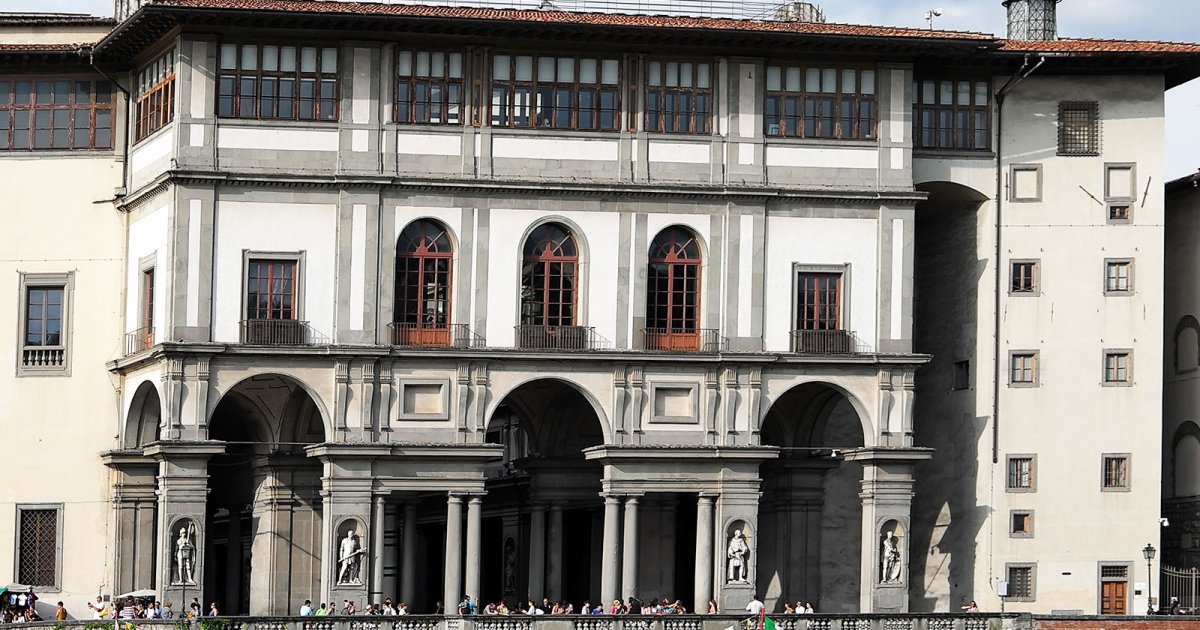UFFIZI BUILDING
 Language: English / USA
Language: English / USA
The Uffizi palace was built next to Palazzo Vecchio in 1560 by Giorgio Vasari to accommodate the government's "administrative offices", but also to become the first and most prestigious part of the long pathway that led to Palazzo Pitti, where the Grand Dukes had moved their residence. Even today, a small bridge connects Palazzo Vecchio with the Uffizi.
Vasari was an architect, painter, and writer, and he created a masterpiece: he had some buildings demolished, including a church, and designed a long, narrow square surrounded on three sides by a series of steps and the porticoes of the new palace, which has two floors with high arches. The short side facing the Arno River was designed as a spectacular panoramic loggia. In the 1800s the exterior decorations were enriched with twenty-eight large statues of illustrious Florentines: you can see them above in the niches.
Even before entering the Gallery's collections, the Uffizi will captivate you from the ground floor.
After the ticket office, a walkway leads to the large space where the ancient Romanesque church stood. On the walls and near some 20th-century works, you can admire the frescoes of the Illustrious People painted in the mid-1400s by Andrea del Castagno: the most famous portraits are those of the 14th-century Tuscan poets: Dante, Petrarca, and Boccaccio. Underneath there's another important detached 15th-century fresco, the amazing Annunciation by Botticelli.
The Cabinet of Drawings and Prints that you can visit on the first floor of the palace is located in the ancient Mediceo Theater. With over one hundred thousand sheets from the 1300s to the 1900s, exhibited in rotation in the form of temporary exhibitions, it is one of the most important collections of graphics in the world.


